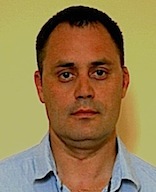
Solid-State and Nano Seminar
MOVPE Droplets Heteroepitaxial Growth Model
Add to Google Calendar

There is an increasing interest in Quantum Dot (QD) structures for various applications, including optoelectronic devices, quantum information processing and energy harvesting. In our work we are growing self-assembled QD's, using the Droplet HeteroEpitaxial mode. Although the droplet heteroepitaxy method is relatively complex, it is quite relaxed with respect to the material combinations that can be used. Detailed structural and composition information with sub-nano resolution has been obtained using both conventional nano characterization methods such as Kelvin Probe AFM techniques and Transmission Electron Microscopy as well as surface X-ray diffraction methods. The Coherent Bragg Analyses is a direct x-ray phasing method, enabling to obtain sub angstrom resolution electron density maps of the dot system. Under different growth conditions and in different QDs systems a number of interesting phenomena have been observed; such as penetration of the dots into the substrate, inter-diffusion, intermixing of materials, dislocations, etc. The structure and composition of the final dot may be very different from the one initially intended. In my talk I will present the structure and composition of a number of quantum dot systems grown by the DHE method, emphasizing the insights that these experiments provide with respect to the growth process.
Dr. Sergey Shusterman is a Research Scientist in the MOCVD group- Applied Physics area with the Solid State Physics, Electro-Optics Division, Soreq Nuclear Research Center in Israel. He joined the Applied Physics area at Soreq NRC in July 2001, and since then he has participated in different research projects related to crystal growth and characterization of II-VI and III-V structures. In his current position, he is the head of the MOCVD group at Soreq NRC. Sergey received his Ph.D. degree from the Department of Physical Electronics of Tel Aviv University in 2009, and received the 2004 Katzir Fellowship during his work there. He has more than 10 years of experience in semiconductor processing, nano structures, MOCVD growth and characterization of III-V (As, P and Sb-based) and II-VI, IV-VI structures. He also has an experience in growth of bulk single crystals of PbTe by Chockralski method for thermoelectric applications as well as CdZnTe by VGF method for optical applications. He was written many journal articles, for publications including the Appl. Phys. Lett., Europhys Letters, J. Appl. Phys, Semicond. J. Crystal Growth, Nano Lett, Nature Nanotechnology, Optics Letters, Optoelectron., Phys. Quantum Electron., and Sensors (among others). At Sereq, Dr. Shusterman has worked in the research areas of CdTe single crystal growth, Solid States Physics, and MOCVD growth.
 MENU
MENU 
